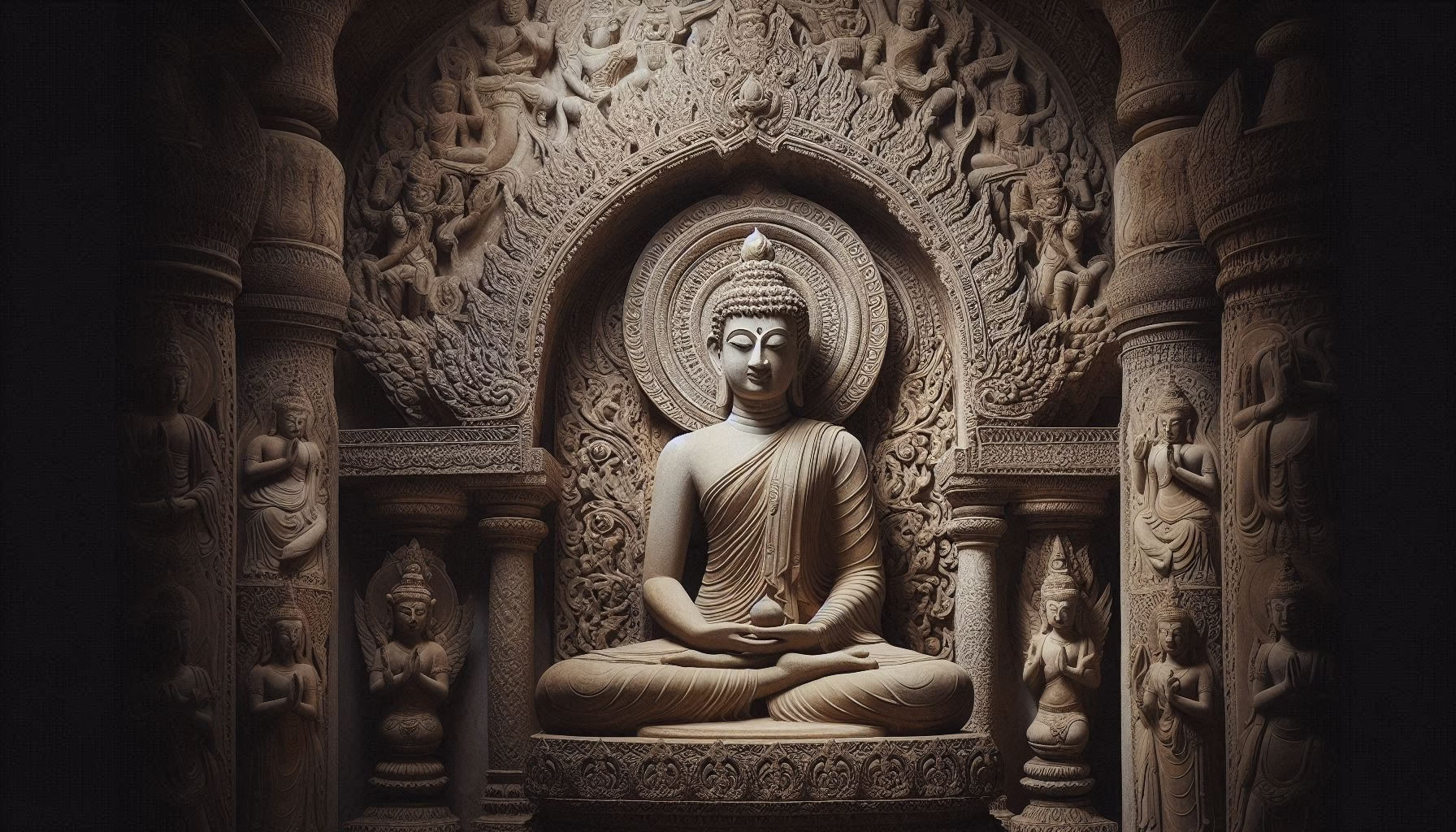
Why Dharma Resonates Today
Dharma which represents traditional cosmic law functions as a personal roadmap to achieve meaningful living today. Pema Chödrön teaches us that living clearly in the present moment is an essential ability to master in today’s age of constant distractions.
Why It’s Relevant:
- Stability in Chaos: Research from Harvard Health confirms that mindfulness practices help people manage stress.
- Personalized Growth: Adapts to individual circumstances, fostering self-discovery.
- Example: Through Dharma mindfulness practices Sarah maintained calmness during her extended nursing shifts while achieving mental clarity amid workplace stress.
Buddhist concepts continue to provide essential guidance for contemporary living.
Core Teachings for Interpreting Dharma Today
The Four Noble Truths and Eightfold Path serve as essential Buddhist teachings for interpreting Dharma today. They provide paths to overcome suffering while guiding ethical behavior in a competitive environment.
Core Teachings:
- Four Noble Truths: Understand suffering as well as its origin while identifying its cessation and the path leading to freedom.
- Eightfold Path: Follow the Eightfold Path by practicing right view together with right intention and right speech as well as right action right livelihood right effort right mindfulness and right concentration.
- Compassion Focus: Encourages empathy over materialism.
- Example: Daniel used the Eightfold Path as a method to resolve disputes ethically which ultimately enhanced his personal connections. Research from the Greater Good Science Center demonstrates that compassion improves well-being.
These principles enable individuals to grow personally while creating societal harmony and provide practical methods to address everyday problems.
Mindfulness: A Cornerstone of Dharma
The practice of mindfulness originates from Buddhist teachings and serves as an essential element for grasping Dharma today. The practice develops non-judgmental awareness which helps reduce stress levels in environments full of distractions.
Simple Practices:
- Breath Awareness: Focus on breathing for 5 minutes daily.
- Conscious Eating: Savor meals to cultivate gratitude.
- Detached Observation: Notice thoughts without reacting.
Benefits:
- Personal: Enhances clarity, per American Psychological Association.
- Social: Strengthens relationships through empathy.
- Example: Mindfulness techniques helped Maria to control her exam anxiety which subsequently enhanced both her concentration and academic performance.
Mindfulness enables individuals to convert their difficulties into chances for personal development while creating an empathetic community.
Technology and Dharma: A Mindful Partnership
With intentional use, technology functions as a tool to deepen our comprehension of Dharma today. Buddhist teachings become accessible through apps and online platforms.
Tools to Explore:
- Meditation Apps: Headspace or Insight Timer offer guided practices.
- Online Courses: Coursera provides Buddhist philosophy lessons.
- Social Media: Follow teachers on Instagram for daily inspiration.
Example:
Despite his busy schedule as a freelancer, John managed to deepen his meditation practice by using Insight Timer to keep his routine going.
Lion’s Roar observes that mindful technology use can unite Buddhist practitioners worldwide despite its distracting nature.
Community Support: Online and Offline Sanghas
Spiritual communities called Sanghas play a crucial role in modern Dharma practice comprehension. They offer guidance and connection.
Options:
- Online: Dharma Seed shares talks and forums.
- Offline: Local centers via Buddhanet host retreats.
Example:
Lisa began with an online sangha to maintain flexibility and then participated in a local retreat to gain mentorship which enabled her to merge both experiences.
Communities foster accountability, enriching your Dharma practice.
Daily Practices to Live Dharma
Incorporating Dharma into modern life creates rewarding and practical results. Try these routines:
- Morning Meditation: 5–10 minutes to set a calm tone.
- Mindful Eating: Be present with each bite, fostering gratitude.
- Gratitude Journaling: Every night make it a habit to ponder three things you appreciate.
Example:
Through gratitude journaling Emma the busy parent redirected her attention toward abundance and reduced stress while supporting Positive Psychology research outcomes.
These practices strengthen your peace and resilience regardless of how busy your day is.
Social Media: Spreading Dharma Mindfully
Buddhist teachings reach broader audiences through social media platforms which requires thoughtful presentation to prevent their oversimplification.
Pros:
- Reaches new audiences via platforms like YouTube.
- Builds communities through Facebook groups.
Cons:
- Risks reducing teachings to quotes, missing nuance.
Example:
Alex found Dharma through Instagram yet expanded their knowledge using Tricycle articles.
Practicing mindfulness while engaging with social media helps maintain its support for your spiritual path.
Transformative Stories of Dharma
Personal journeys highlight Dharma’s impact:
- Sarah: Overcame grief through meditation, finding peace.
- Daniel: Built empathy via ethical living, strengthening ties.
Mindful.org shares these stories to motivate their audience to pursue Dharma teachings.
FAQ Section
Q: What is the best way to learn about Dharma given today’s world?
A: Start your Dharma journey with daily 5-minute meditation sessions while reading Thich Nhat Hanh’s books and performing small acts of kindness.
Q: Is Dharma only for Buddhists?
A: Dharma’s teachings about mindfulness and compassion are universal and extend beyond any specific religious belief.
Q: Can technology aid Dharma practice?
A: Digital platforms including Headspace apps and online sanghas deliver convenient methods for practice but maintaining balance is essential.
Q: How do sanghas support Dharma practice?
A: Sanghas deliver community support together with guidance and accountability through both online platforms and face-to-face interactions.
Conclusion: Embrace Dharma for a Fulfilling Life
Modern understanding of Dharma provides a meaningful direction which leads to a purposeful and peaceful life. The practice of mindfulness together with compassion and community strengthens your ability to handle life’s challenges while helping to make the world more compassionate. Authentic sources and individual experiences demonstrate the enduring significance of Dharma.